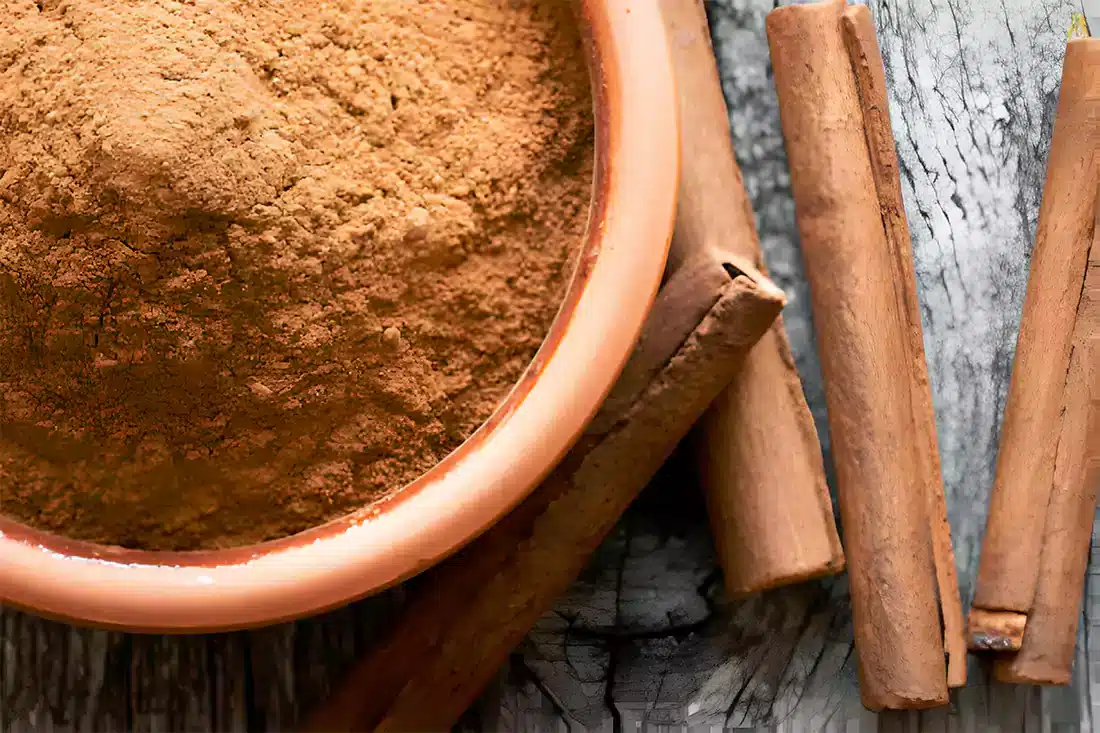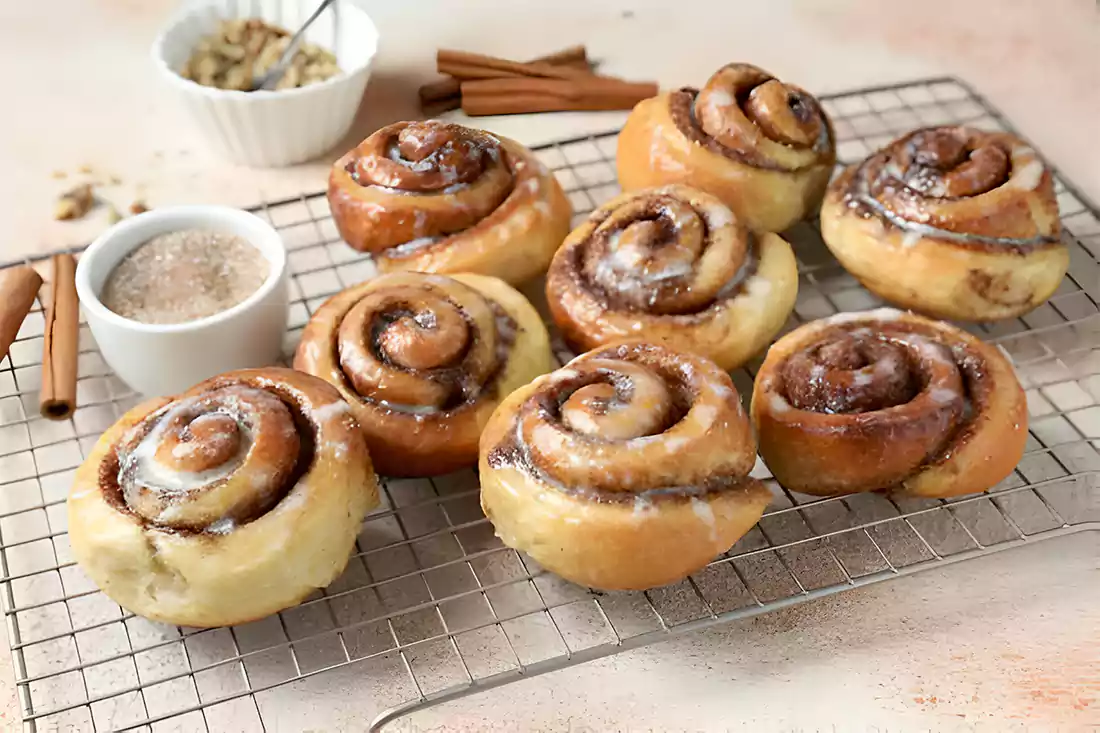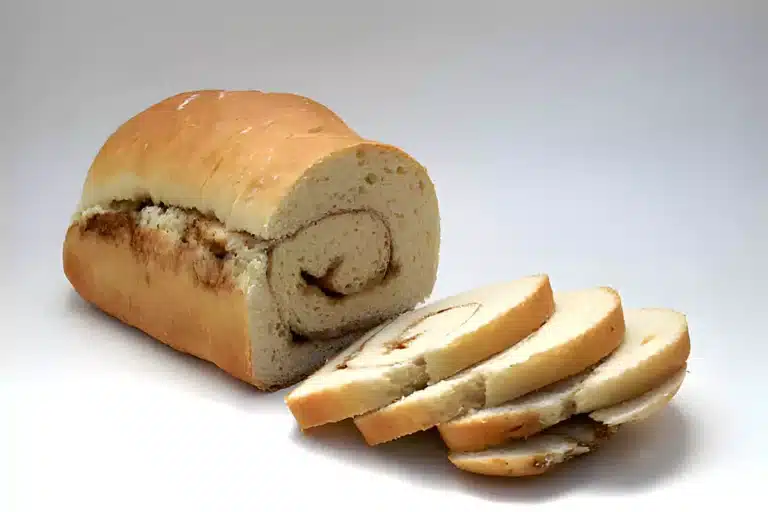The Role of Cinnamon in Enhancing Bread Recipes
Ah, cinnamon bread! Just the mention of this spiced treat conjures up images of cozy mornings and comforting flavors. But did you know the key ingredient, cinnamon, has roots that run deep in the history of baking? That’s right, this beloved spice isn’t just a modern-day favorite; it’s been a key player in enhancing bread recipes for ages, adding that special something that keeps us coming back for more.
The Historical Journey of Cinnamon in Bread Baking
Cinnamon’s journey began thousands of years ago, where it was as valuable as gold. Ancient civilizations weren’t just using it to spice up their dishes; they were incorporating it into their bread, too. This wasn’t just for the flavor, mind you. Cinnamon had a certain je ne sais quoi, a way of making bread more than just a staple food. It was an experience.
The Enduring Appeal of Cinnamon in Sweet Bread Recipes
Fast forward to today, and cinnamon’s popularity in sweet breads is undeniable. Ever heard of cinnamon rolls? Of course, you have! They’re the epitome of cinnamon’s magic in baking. But it’s not just about the taste. Cinnamon adds a complexity to bread that’s hard to beat. It’s like a symphony in your mouth, where every note is perfectly in tune.
So, why do bakers keep reaching for that cinnamon jar? Well, it’s simple. Cinnamon transforms the ordinary into the extraordinary. It’s the difference between a plain loaf of bread and a masterpiece that dances on your palate. And let’s be honest, who wouldn’t want a piece of that action?
In the next section, we’ll peel back the layers and explore the science behind cinnamon’s impact on bread dough. Stay tuned, because things are about to get interesting!
Delving into the Baking Science of Cinnamon
Diving into the nitty-gritty of cinnamon’s role in bread making is like opening a Pandora’s box of baking science. But don’t worry, we’re here to guide you through it, one fascinating fact at a time. So, let’s get down to the brass tacks and uncover the secrets behind cinnamon’s irresistible charm in bread dough.
The Distinctive Aroma and Taste of Cinnamon in Baking
First off, let’s talk about what makes cinnamon such a standout spice. Its flavor and aroma are nothing short of a marvel, thanks to the essential oils tucked away in the bark of the cinnamon tree The star of the show? Cinnamaldehyde. This compound is the real MVP, giving cinnamon its characteristic warmth and spice that we all know and love.

But cinnamon’s magic doesn’t stop at just tickling your taste buds. Oh no, it’s a full sensory experience! The aroma of cinnamon baking in bread is like a warm hug on a cold day. It’s comforting, inviting, and downright irresistible. It’s the kind of scent that makes you want to pull up a chair and stay awhile.
How Cinnamon Enhances Bread Dough
Now, let’s get technical for a moment. When cinnamon waltzes into your bread dough, it’s not just there to party. It’s got work to do! Cinnamon interacts with the dough in ways that are both helpful and, well, a bit tricky.
For starters, cinnamon is like a cheerleader for yeast. It contains enzymes that break down starches in the flour, making the dough more elastic and easier to handle. But here’s the kicker: cinnamon is also a bit of a double agent. While it’s busy boosting the dough’s elasticity, it’s also packing tannins that can put the brakes on yeast growth. Too much cinnamon, and your bread might just decide it’s not in the mood to rise.
But fear not, dear bakers! With a little know-how and moderation, you can harness cinnamon’s powers for good. The key is finding that sweet spot where the flavor is just right, and the dough rises to the occasion.
In the next section, we’ll dive deeper into the practical effects of cinnamon on bread dough. From texture tweaks to flavor finesse, we’ve got plenty of tips and tricks up our sleeves. So, stay tuned, and let’s keep this flavor train rolling!
The Transformative Effects of Cinnamon on Bread Dough
Alright, folks, it’s time to roll up our sleeves and get our hands doughy! We’re venturing into the practical world where cinnamon meets bread dough. This is where the rubber meets the road, or should we say, where the spice meets the dough!
Impact on Dough Texture
First up, let’s chat about texture. Cinnamon doesn’t just waltz into your dough without leaving a mark. It’s like a guest who rearranges your furniture – but in a good way! Cinnamon can make your bread’s texture softer and more tender.Why? It all boils down to cinnamaldehyde, that MVP compound we talked about earlier. It messes with gluten formation, making the dough a tad less sturdy but oh-so-delightful.
But here’s the thing – cinnamon is a bit of a diva. It demands attention, especially when it comes to the rising process. Yeast, the little engine that could in bread making, isn’t too fond of cinnamon’s antimicrobial properties. It’s like cinnamon throws a tiny wrench in the works, making the yeast work overtime to puff up that dough.
Cinnamon’s Influence on Dough Flavor
Now, let’s spice things up a bit and talk about flavor. Cinnamon adds a depth of flavor to bread that’s hard to replicate. It’s like adding a layer of complexity that makes your taste buds do a happy dance. But remember, with great power comes great responsibility. Too much cinnamon, and you might overpower the subtle nuances of your bread. It’s all about balance, my friends.
Cinnamon and Dough Rise
And then there’s the rise – the moment of truth in bread baking. Cinnamon can be a bit of a party pooper here, slowing down the yeast’s groove. But don’t let that deter you! With a few tweaks, like a smidge more yeast or a tad longer proofing time, you can still achieve that glorious rise. It’s like coaxing a shy friend onto the dance floor – a little encouragement goes a long way.
In the next section, we’re diving deeper into the art of mastering cinnamon in your bread baking. From the perfect sprinkle to the ideal mix, we’ve got the insider tips to make your cinnamon-infused bread a showstopper. So, stick around, because the best is yet to come!
Tips for Baking with Cinnamon in Bread Recipes
Navigating the cinnamon-infused waters of bread baking can be a thrilling adventure. It’s like being the captain of your own spice-laden ship! But to steer clear of the rocks and reach the shores of Deliciousville, there are a few tricks of the trade you’ll want to have up your sleeve.
Tips for Working with Cinnamon in Bread Dough
First things first, let’s talk about moderation. Cinnamon is a bit like that one friend who’s a blast at parties but can sometimes take over the conversation. You want its presence to enhance, not overpower. A sprinkle here, a dash there, and voilà – you’ve got the perfect balance that lets all the flavors shine.
Now, when it comes to mixing, you’ll want to ensure cinnamon is evenly distributed throughout your dough. Think of it as sprinkling fairy dust – you want it everywhere, not just in clumps. A good rule of thumb is to mix your cinnamon with the dry ingredients before introducing any wet components. This way, you’re setting the stage for an even flavor profile that’ll make each bite a harmonious blend of taste and texture.
Experimentation and Personal Preferences
Here’s where things get really fun – experimentation! Baking is as much an art as it is a science, and playing around with cinnamon in your recipes can lead to some delightful discoveries.Maybe it’s a cinnamon swirl that turns a simple loaf into a visual and gustatory masterpiece, or perhaps a hint of cinnamon in a savory bread that takes it from good to gourmet.
Remember, the kitchen is your playground, and cinnamon is one of the most versatile toys you have. Whether you’re a fan of the bold and spicy or the subtle and sweet, there’s a cinnamon approach for everyone. So don’t be afraid to experiment and find your personal cinnamon nirvana.
In the next section, we’ll tackle some of the most burning questions about cinnamon in bread baking. From alternative spices to the effects of too much cinnamon, we’ve got the answers you’ve been craving. So, keep your aprons tied and your curiosity peaked – the journey continues!
Answering Your Top Cinnamon Bread Baking Questions
As we knead through the dough of our cinnamon-infused baking journey, a few questions might pop up like bubbles in a loaf of freshly baked bread. Fear not, for we’re here to tackle some of the most common curiosities and conundrums that might arise when cinnamon and bread dough cross paths.
Alternative Spices to Cinnamon in Bread Dough Recipes
So, you’re looking to mix things up a bit, huh? While cinnamon is the star of the show, there are other spices waiting in the wings, ready to take the stage. Nutmeg and allspice can bring a warm, earthy flavor to your bread, while a pinch of cardamom adds an exotic twist. And for those who like to walk on the spicy side, a whisper of cayenne pepper or ginger can add a surprising kick. The spice world is your oyster!
Effects of Excessive Cinnamon
Ah, the age-old adage of “too much of a good thing.” When it comes to cinnamon, a little goes a long way. Overdo it, and you might find your bread taking on a dry, crumbly texture that’s more akin to a desert than a dessert. The key is balance – finding that sweet spot where cinnamon enhances rather than overwhelms. Remember, it’s a dance, not a dominance.
Differences Between Cinnamon Types
In the grand tapestry of cinnamon varieties, Ceylon and Cassia are the two main threads. Ceylon, often hailed as “true cinnamon,” offers a milder, sweeter flavor, perfect for those delicate bread recipes. Cassia, on the other hand, packs a bolder punch, ideal for when you want your cinnamon to stand front and center. Choosing between them is like picking the right outfit – it all depends on the occasion.
Nutritional Implications of Adding Cinnamon
Sprinkling cinnamon into your bread dough isn’t just a feast for the senses; it’s a nod to nutrition too. Cinnamon comes with a treasure trove of health benefits, from anti-inflammatory properties to antioxidant prowess. But, as with all things, moderation is key. Keep an eye on the amount to ensure your bread remains a beacon of both taste and health.
Special Considerations for Gluten-Free Recipes
For the gluten-free bakers out there, cinnamon can be a faithful ally in your baking adventures. Just be sure to choose a gluten-free cinnamon to avoid any cross-contamination. And remember, cinnamon can affect the texture of your dough, so a little extra liquid might be in order. It’s all about adapting and overcoming, turning challenges into delicious opportunities.
As we wrap up this section, remember that every question leads to new discoveries. So, keep asking, keep experimenting, and most importantly, keep baking. The world of cinnamon-infused bread is vast and varied, and there’s always something new to learn and savor.
Stay tuned for our concluding thoughts, where we’ll tie up all the loose ends and send you off with a sprinkle of inspiration for your next baking endeavor.
Concluding Thoughts on Cinnamon’s Role in Bread Making
As we come to the end of our cinnamon-laced journey through the world of bread making, it’s time to dust off the flour, take a step back, and reflect on what we’ve learned. Cinnamon, with its warm embrace and sweet whispers, has shown us that it’s more than just a spice; it’s a storyteller, a flavor enhancer, and a baker’s confidant.

Summary of Key Insights
We’ve unraveled the mysteries behind cinnamon’s enchanting effects on dough texture, flavor, and rise. We’ve learned that while cinnamon can be a bit of a diva, demanding attention and moderation, its contributions to bread making are invaluable. From the tender crumb it bestows to the aromatic allure it imparts, cinnamon transforms ordinary bread into an extraordinary experience.
Encouragement for Ongoing Experimentation and Research
But our exploration doesn’t end here. The world of baking is as vast as it is delicious, and there’s always room for experimentation. Whether it’s playing with different types of cinnamon, adjusting quantities, or experimenting with new recipes, the possibilities are as limitless as your imagination. So, I encourage you to keep experimenting, keep learning, and most importantly, keep baking.
As we close this chapter, remember that baking is not just about following recipes; it’s about creating joy, one loaf at a time. Cinnamon, with its sweet spice and warm notes, is just one of the many tools at your disposal to craft that joy. So, go ahead, sprinkle a little cinnamon, and watch as your bread rises not just in the oven, but in the hearts of those who savor it.
Thank you for joining me on this flavorful adventure. May your baking endeavors be sprinkled with spice and everything nice. Happy baking!
